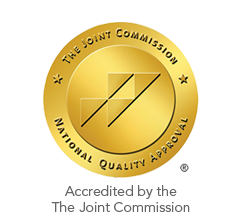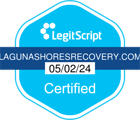We all know that substance use may be reinforced by peer pressure. For example, when people hang out with friends who use drugs and alcohol or place themselves in situations where they have access to substances, they become more likely to engage in continued use. However, can peer pressure work the other way? If so, how can we utilize the power of positive peer pressure?
How Does Peer Pressure Work?
Because humans are social beings, we look to each other’s actions and pick up behavioral cues from others. Take children, for example. They do most of their learning through social interactions and modify their behaviors according to their observations. When they approach adolescence, influence largely switches from parents and caretakers to peers. This is a natural and healthy process for teenagers to relate with one another as they mature.
However, peers can exert pressure on individuals. For example, acquiring new skills, new interests in certain books, or extracurricular activities can become a competition or rivalry. This can motivate teens to push themselves to be better, or it can foster bad habits. For example, teens and adolescents may feel pressure to follow suit when experimenting with risky behaviors is encouraged within a peer group. They do this to be accepted and liked by the group.
Negative Peer Pressure Contributes to Substance Use
Teenagers, young adults, and even older age groups can begin using substances to be included in a peer group’s trend. Peer groups can mean friends, co-workers, or even family members in a social environment. Exposure to friends and family who use drugs and alcohol can put teens at a higher risk of using. They may see substance use as entertainment to fill time or self-soothe physical or emotional pain.
Influence can range from subtle to overt. Take college students, for example. This age group is in a unique window of vulnerability as they reach the legal drinking age and begin living independently. On a more subtle level, college campuses are a venue where alcohol use is more acceptable and popular. Additionally, particular friends or peer groups like fraternities may overtly encourage drinking or drug use to fit in or have fun.
How to Resist Negative Peer Pressure in Recovery
those going through treatment and recovery should consider who they hang out with because it matters. Some individuals may have previously hung out with friends who used or drank. However, since deciding to get sober, it may no longer be a good idea to continue these friendships. There is a high possibility that a recovering individual will experience negative peer pressure.
Unfortunately, this is often an emotionally challenging problem. Even speaking with friends who may bring up the topic of substance use can trigger stress and cravings. Individuals who are committed to quitting need to prioritize sobriety at all costs. They may need to communicate with supportive family members about needing accountability for not meeting with old friends.
Utilizing More Positive Peer Pressure in Recovery
Though peer pressure can potentially be detrimental to recovery, avoiding all socialization is also not beneficial to individuals’ emotional and mental health. Luckily, positive peer pressure also exists. Peer pressure can be positive if being around specific individuals spurs others toward health and well-being.
For example, recovering individuals need friends who can encourage them and advise them on staying sober. With positive peers, people can gain new experiences and learn new life skills. Peers who have been diligent in maintaining sobriety act as role models. Socialization with like-minded individuals who can motivate people to stay on the path of sobriety is conducive to long-term health.
Below are some common signs of positive peer pressure:
- Open and honest communication
- Mutual commitment to sobriety
- Active and timely emotional support
- Mutual sharing and listening
- Sharing access to helpful recovery resources
- Encouraging each other to seek professional help when necessary
Although peer support can be helpful, this is still nonprofessional, nonclinical advice. Those in recovery should still value the role of health professionals. Positive peer support in addiction recovery may also point individuals to seek professional help.
Where to Find Peer Support Groups
Peer support during recovery can take many forms. For example, when individuals begin residential treatment, other recovering people in the facility can become their new peer group. 12-Step programs are another good peer-influence environment. A 12-Step sponsor can play a vital peer influence role.
After completing residential rehab, individuals should join an alumni program to make new friends who are also transitioning to a sober life. Through fun events and sober activities, those in recovery can rebuild their social life without substance use as a factor. Alumni groups are the perfect place to connect with peers and discover new sober activities.
Peer pressure can actually be a positive force in the life of a person going through recovery from addiction. Laguna Shores Recovery specializes in group therapy that magnifies the influence of positive peer pressure. Here, you will meet our experienced mental health professionals who excel at facilitating peer support groups such as 12-step meetings. Our Adulting 101 lessons also support our clients in rebuilding life skills, and one of these skills is finding and using positive peer support. From residential programs to outpatient group therapy, we provide all you need. Call us today to discover how you can be part of our community, as peer support is key to long-term recovery. For more information, call 954-688-5806.

 Matthew Beck B.A, M.A, LMFT
Matthew Beck B.A, M.A, LMFT 


